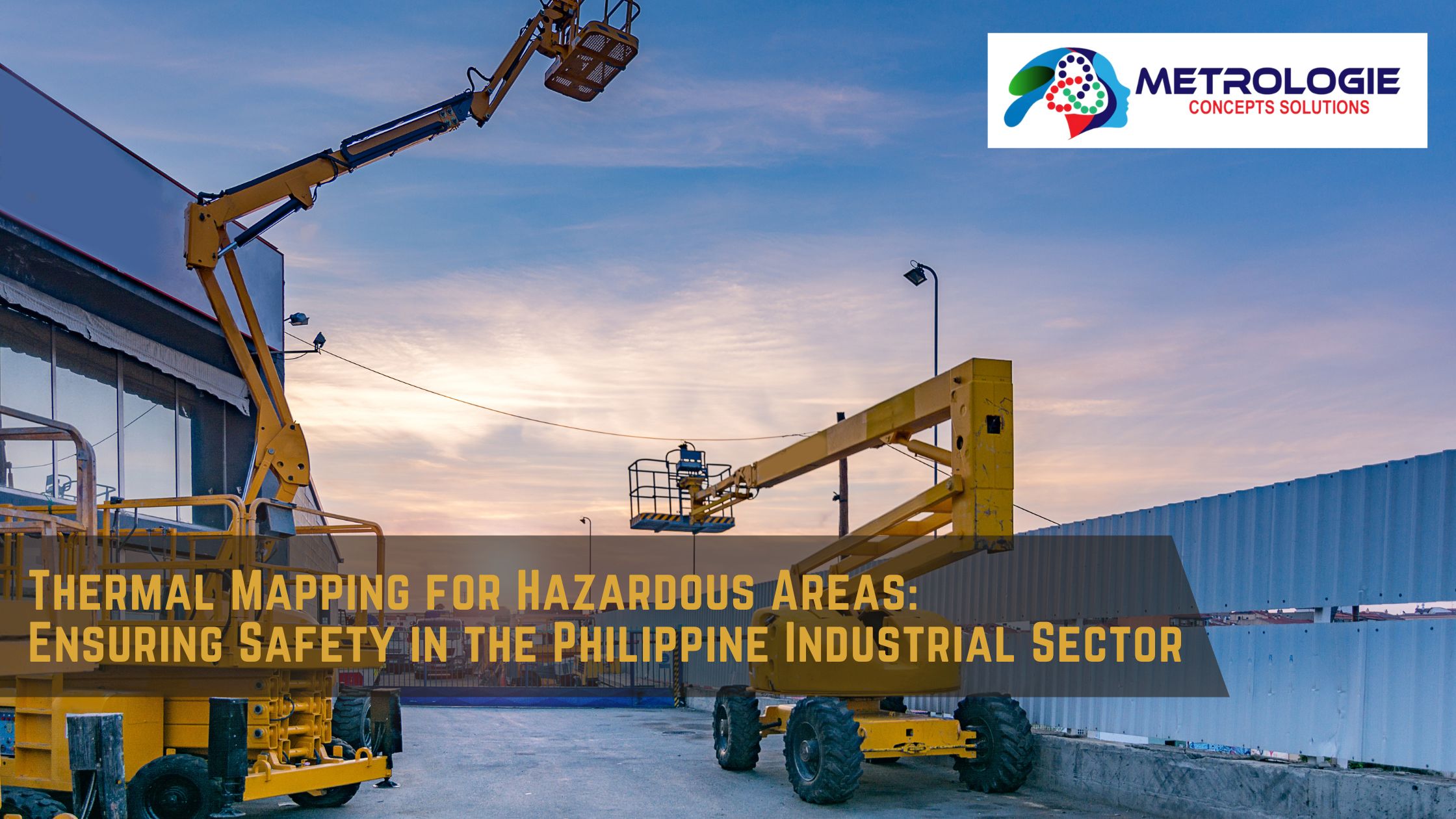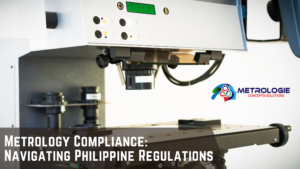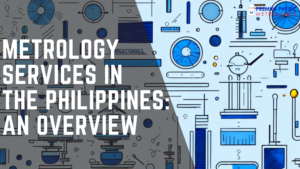Introduction
In the Philippine industrial sector, safety is paramount, particularly in hazardous areas where the potential for accidents and equipment malfunctions is higher. Thermal mapping has emerged as a critical tool for ensuring safety and compliance in such environments. By identifying temperature variations and potential hotspots, thermal mapping enables proactive measures to prevent accidents, minimize downtime, and ensure worker safety.
This article explores the role of thermal mapping in hazardous areas within the Philippine industrial sector, its applications, benefits, and how it aligns with safety regulations. We’ll also discuss best practices for implementing thermal mapping to protect high-risk environments.
1. Understanding Hazardous Areas in the Philippine Industrial Sector
What Defines a Hazardous Area?
Hazardous areas in industries are locations where there is a risk of explosion, fire, or chemical exposure due to the presence of flammable gases, liquids, or combustible dust. Examples include oil refineries, chemical plants, and manufacturing facilities that deal with volatile substances.
In the Philippines, these areas are subject to strict regulations to prevent incidents that can cause loss of life, environmental damage, and significant financial loss.
Regulatory Standards for Hazardous Areas in the Philippines
The Department of Labor and Employment (DOLE) and other governing bodies enforce safety protocols in hazardous areas. International standards, such as those from the International Electrotechnical Commission (IEC) and the Occupational Safety and Health Administration (OSHA), provide guidance on managing hazardous environments. Philippine regulations follow these guidelines to ensure that industries maintain rigorous safety standards.
The Importance of Thermal Mapping in Hazardous Zones
Thermal mapping identifies temperature variations, potentially indicating equipment overheating, gas leaks, or other risks. In hazardous areas, monitoring temperature fluctuations is crucial for preventing dangerous incidents, making thermal mapping a vital safety and compliance tool.
2. How Thermal Mapping Works in Hazardous Environments
The Science of Thermal Mapping
Thermal mapping involves the use of sensors and thermal imaging devices to monitor and analyze temperature patterns over time. It can detect abnormal temperatures that may signal an underlying issue, such as equipment malfunction or leakage.
Thermal mapping typically includes:
- Identifying Critical Points: Pinpointing areas where temperature control is essential, such as near machinery, pipelines, or chemical storage.
- Placing Sensors Strategically: Positioning temperature sensors at key points to capture comprehensive data.
- Recording and Analyzing Data: Collecting data continuously to identify any temperature variations that could indicate potential hazards.
Equipment Used in Thermal Mapping
Thermal mapping relies on advanced equipment such as:
- Thermal Cameras: Used for identifying hotspots or abnormal temperature fluctuations.
- Infrared Sensors: Often used in conjunction with thermal cameras, these sensors can detect changes in temperature that may indicate equipment overheating.
- Temperature Loggers: Portable devices that track temperature variations over time, ideal for regular monitoring of hazardous areas.
Interpreting Thermal Mapping Results
After data collection, professionals interpret the findings to determine if immediate action is necessary. Thermal mapping reports often include visual maps of temperature variations, enabling managers to quickly identify high-risk areas and make informed decisions about maintenance, repairs, or process adjustments.
3. Benefits of Thermal Mapping for Hazardous Areas
Enhanced Worker Safety
Thermal mapping identifies potential hazards before they become incidents, allowing facilities to protect workers from exposure to dangerous conditions. For example, detecting high temperatures near gas storage can prevent a potential fire hazard, while identifying overheated machinery can avert accidents.
Improved Compliance with Safety Standards
In the Philippines, thermal mapping helps companies comply with safety regulations, reducing the risk of fines and shutdowns due to non-compliance. Many regulations require regular monitoring of hazardous areas, and thermal mapping provides a documented process for compliance verification.
Proactive Risk Management
Thermal mapping allows for proactive maintenance by detecting early signs of equipment failure. Identifying issues before they escalate prevents costly repairs, downtime, and potential accidents. This proactive approach also extends the lifespan of critical equipment.
Energy Efficiency and Cost Savings
By identifying inefficiencies—such as equipment that generates excessive heat due to wear and tear—thermal mapping can contribute to energy savings. Efficient equipment consumes less energy, helping companies save on operational costs while minimizing environmental impact.
4. Applications of Thermal Mapping in the Philippine Industrial Sector
Oil and Gas Industry
The oil and gas sector often deals with hazardous substances and high temperatures, making thermal mapping essential for monitoring pipelines, storage tanks, and processing equipment. Thermal mapping identifies overheating or leaks, enabling prompt intervention to avoid accidents.
Chemical Manufacturing
Chemical plants handle volatile substances, requiring strict temperature control. Thermal mapping is used to monitor storage areas, reactors, and other critical equipment, preventing reactions that could lead to explosions or fires.
Power Plants
Power plants, particularly those dealing with fossil fuels, generate substantial heat and pose unique hazards. Thermal mapping is crucial in monitoring turbines, boilers, and fuel storage areas to prevent overheating and ensure stable operations.
Food and Beverage Industry
In the food sector, hazardous environments may include areas where volatile chemicals are used for refrigeration or cleaning. Thermal mapping monitors these areas to ensure compliance with safety standards and prevent accidental leaks or malfunctions.
Pharmaceutical Industry
Thermal mapping is essential in the pharmaceutical industry for monitoring temperature-sensitive products and equipment. It ensures the safe storage of chemicals and helps maintain stable environments for producing pharmaceuticals, particularly those sensitive to temperature fluctuations.
5. Implementing Thermal Mapping in Hazardous Areas: Best Practices
Conduct a Thorough Hazard Assessment
Before implementing thermal mapping, it’s essential to assess the specific hazards present in each area. This includes identifying flammable substances, high-temperature equipment, and other potential risks. A hazard assessment helps determine the optimal placement of sensors for comprehensive coverage.
Choose the Right Thermal Mapping Equipment
Select equipment based on the environmental conditions and specific needs of your facility. In the Philippines, factors such as humidity, temperature fluctuations, and dust levels may impact equipment performance. Investing in high-quality, reliable thermal mapping tools is crucial.
Train Personnel in Data Interpretation
Proper training is essential for personnel responsible for analyzing thermal mapping data. Understanding how to interpret results and identify warning signs can make the difference between preventing an incident and facing a hazardous situation.
Integrate Thermal Mapping into Regular Maintenance Routines
Thermal mapping should be part of a facility’s routine maintenance schedule. Regular monitoring helps track changes over time and enables early detection of anomalies. Integrating thermal mapping with other safety protocols, such as equipment checks and environmental monitoring, creates a comprehensive safety approach.
Document Findings and Actions Taken
Documentation is critical for compliance and future reference. Recording findings from thermal mapping sessions, along with any actions taken, provides a clear record that can be used for audits, compliance verification, and internal reviews.
6. Challenges and Solutions in Thermal Mapping for Hazardous Areas
Equipment Sensitivity to Environmental Conditions
The Philippines’ tropical climate can impact the performance of thermal mapping equipment. High humidity, temperature fluctuations, and dust can affect sensors, requiring facilities to use ruggedized equipment designed for harsh conditions.
Ensuring Consistent Data Collection
In hazardous areas, consistent data collection is essential but can be challenging due to access restrictions. Automated thermal mapping solutions, such as remote sensors and cloud-based data logging, offer an effective way to monitor hard-to-reach areas continuously.
Interpreting Large Volumes of Data
Thermal mapping generates extensive data, which can be overwhelming to interpret manually. Advanced software solutions that use machine learning algorithms can analyze large datasets, identify patterns, and alert personnel to potential hazards.
7. The Future of Thermal Mapping in the Philippine Industrial Sector
Advancements in Remote Monitoring Technology
Remote monitoring technology is evolving, allowing thermal mapping systems to provide real-time data from hazardous areas. These advancements are particularly valuable in the Philippines, where industrial facilities can be challenging to access due to geographical constraints.
Integration with IoT and AI
The Internet of Things (IoT) and artificial intelligence (AI) offer significant potential for thermal mapping. IoT-connected sensors can monitor temperature continuously, while AI algorithms analyze data to detect trends and predict potential hazards, helping facilities stay ahead of risks.
Expanding to More Sectors
While thermal mapping is already prominent in industries like oil, gas, and chemicals, other sectors are beginning to recognize its benefits. Industries such as logistics, mining, and agriculture in the Philippines are increasingly incorporating thermal mapping to enhance safety and operational efficiency.
Conclusion
Thermal mapping is a powerful tool for ensuring safety in hazardous areas within the Philippine industrial sector. By providing real-time monitoring, data analysis, and proactive risk management, thermal mapping helps prevent accidents, ensure compliance, and protect both workers and assets.
For industries operating in high-risk environments, thermal mapping is not just a regulatory requirement but a crucial investment in safety and efficiency. As technology advances, the potential of thermal mapping continues to grow, enabling even greater levels of protection and operational control.




